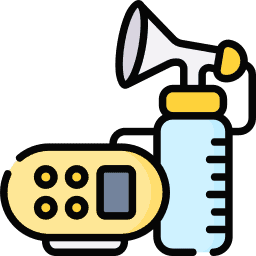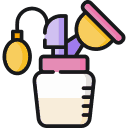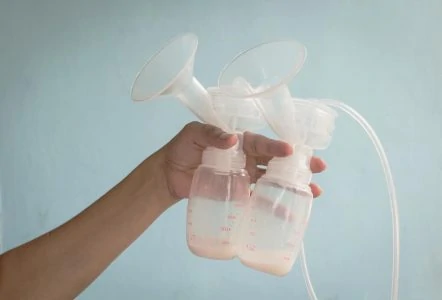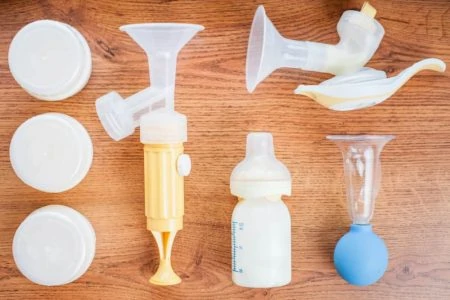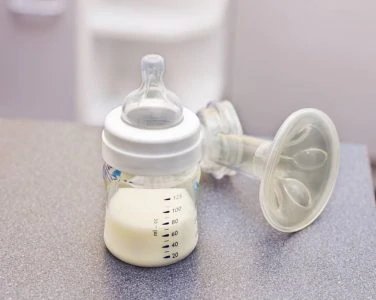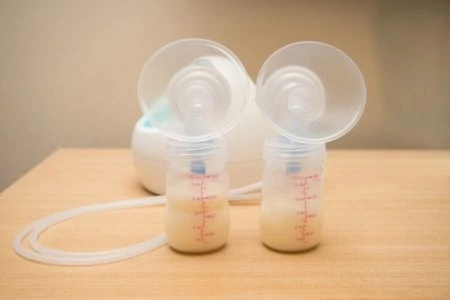Breastfeeding is natural, but that doesn’t mean it’s easy. From latching issues to sore nipples, the struggle is real. If you are worried about your milk supply, you have probably heard the term “power pumping” thrown around in mom groups.
Power pumping mimics the cluster feeding patterns of a newborn to trick your body into producing more milk. It is an intense but effective strategy for moms dealing with a dip in supply.
Ready to boost your breast milk naturally? Here is everything you need to know to get started with a power pumping schedule.
Key Takeaways
- Mimic nature: Power pumping replicates a baby’s cluster feeding behaviors to signal your body to produce more milk.
- Commit to the hour: The most common method involves a 60-minute cycle of pumping and resting, replacing one regular session.
- Be consistent: It typically takes a few days to a week of daily power pumping to see a noticeable increase in supply.
- Prioritize comfort: Use a double electric pump, a hands-free bra, and plenty of hydration to make the process sustainable.
What Is Power Pumping?
Before we start the timer, let’s look at how breast milk production works. It essentially comes down to supply and demand (1). Like a smart factory manager, your body is constantly adjusting inventory based on how much product is moving out the door.
Power pumping, also known as cluster pumping, is a technique designed to ramp up that production. Instead of one long, steady pumping session, you pump rapidly in short bursts with breaks in between. This mimics a growth-spurt baby who wants to eat constantly.
By rapidly emptying the breast, you trigger a hormonal response that tells your body, “We need more milk, and we need it now.”
Should You Try Power Pumping?
It is easy to panic and assume you have low milk supply, but that isn’t always the case. Your breasts might feel softer, or your baby might be fussier, but these aren’t always signs of low production.
Before you commit to a power pumping schedule, check the output. If your baby is producing plenty of wet and dirty diapers and gaining weight, your supply is likely fine.
What The Doctors Say
A key indicator of proper nutrition is your baby’s growth. From birth to six months of age, your baby should be gaining around 140 to 200 grams of weight per week.
Babies up to six months generally grow about half an inch to one inch per month. Between six months and one year, you will see about one centimeter of growth monthly (2).
If your pediatrician is happy with your baby’s growth, you are doing a great job. However, if you are supplementing, relactating, or have a confirmed low supply, power pumping is a great non-medical solution to try.
How to Power Pump
Ready to kick your supply into high gear? The goal here isn’t to get a full bottle during the session but to stimulate future production. You will need about an hour of uninterrupted time.
Here is the classic “Power Hour” method:
- Pump for 20 minutes: Ideally, use a double electric pump to tackle both sides at once.
- Rest for 10 minutes: Drink some water, have a snack, or relax.
- Pump for 10 minutes: Turn the pump back on for a short burst.
- Rest for 10 minutes: Take another break.
- Pump for 10 minutes: Finish with one final session.
Repeat this routine once a day for a few days or up to two weeks. Some moms see results in 48 hours, while others need a bit more time.
Mom Tip
The best time to pump is whenever you have help. If mornings are chaotic, do your power hour at night while your partner holds the baby. Stress inhibits letdown, so choose a time when you can actually relax.
Power Pumping Schedule Options
Every body is different. While the classic 60-minute power hour is the gold standard, you can modify it to fit your life. Lactation experts suggest a few variations (3).
Here are a few schedules to consider:
| – | Standard Power Hour | Morning & Evening | Short & Sweet |
| Pump | 20 minutes | 10 minutes | 15 minutes |
| Break | 10 minutes | 10 minutes | 10 minutes |
| Pump | 10 minutes | 10 minutes | 15 minutes |
| Break | 10 minutes | 10 minutes | 10 minutes |
| Pump | 10 minutes | 10 minutes | 15 minutes |
Power Pumping FAQs
If you are new to this technique, you probably have questions. Here are the answers to the most common queries about increasing milk production.
More Ways to Increase Milk Supply
The U.S. Office on Women’s Health suggests several methods to boost milk supply alongside pumping (6).
Try adding these habits to your routine:
- Hands-on pumping: Use your hands to massage and compress your breasts while pumping. This helps empty the breast more effectively than suction alone.
- Switch sides: If you are nursing, offer both breasts at every feeding. If the baby finishes one side, offer the second to ensure maximum stimulation.
- Check your flanges: Incorrect flange size is a major killer of milk supply. If it hurts or if the areola is being pulled into the tunnel, size up or down.
- Skin-to-skin contact: Snuggling your baby skin-to-skin releases oxytocin, the love hormone that helps letdown and milk production.
- Hydration and nutrition: You cannot pour from an empty cup. Ensure you are drinking enough water and eating nutrient-dense meals.
To Power Pump or Not to Power Pump
Power pumping can be a game-changer for moms struggling with supply, but it requires dedication. If you are feeling discouraged, remember that breastfeeding is a journey with peaks and valleys.
Give the power hour a try for a week and see how your body responds. Most importantly, try to relax. Stress is the enemy of milk production. You are doing a great job providing for your little one, no matter how you feed them.




